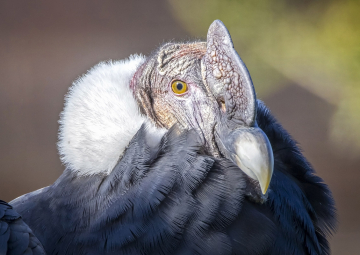THEORY
Our best tool and how it works

In our second article we talk about operant and classical conditioning, and this time we will explain in detail what bridge is, what types there are, and their relationship with both types of learning.
The bridge (also called a bridge stimulus), because its characteristic is to join two points, the response and the reinforcement, is a communication tool that will serve to indicate to the animal that the behavior performed was correct.
In the early stages, the bridge, which at the moment is a neutral stimulus, does not provoke a response in the animal, so it will have no effect. But if after using it, then we offer a reinforcer (mainly a primary one, such as food) the conditioning process will occur in a fast way, so every time the bridge is presented, we will mark the animal the exact point we want of the behavior it has performed and quickly associate the marker with the reinforcement. It is at this moment when bridge becomes a secondary reinforcement (that which has been conditioned through a good history of association with food or other reinforcers such as playtime, toys and even with other behaviors reinforcing themselves).
How to choose the type of bridge
Since its function is to pinpoint a certain moment of behavior to be reinforced, we can use any stimulus that is brief and easy to distinguish, such as a whistle, a tactile gesture, a word, an object, and even a flash of light! The latter was conditioned to train with a deaf orca in Loroparque Tenerife.
The reason we can train different types of bridge is because of functionality and variability. Just as, for example, the whistle is very useful as it allows us to have hands free and the sound is heard remotely, the tactile type are very useful in blind animals or with low visibility, the visual type are suitable for deaf animals… etc.
In this video, you can see an example of different types of bridge.
{youtube}https://youtu.be/v7g4vOg4Hd8{/youtube}
The importance of good timing
Telling the animal the exact timing of a behavior is the key to getting good results and good communication with your animal. If we bridge too early or too late, we may be reinforcing another aspect of a behavior and even conditioning some unwanted or superstitious behavior.
The latter is a common practice in novice trainers who often deliver the bridge when the animal performs the behavior with the intention of terminating it and returning to control to be reinforced but without considering at what exact point of the behavior the bridge has been delivered.
Some trainers may inadvertently make a gesture such as reaching out to the pouch of food, opening a bucket, turning to get the reinforcement, etc., just a moment before bridge, so the animal would anticipate the original bridge and instead associate the reinforcement with that gesture we made without realizing it.
In addition to this, we must be aware that there is a time limit between the presentation of the bridge and reinforcement, otherwise not only would we not be reinforcing the behavior performed but we would create confusion for the animal. So the moment the animal receives the bridge, it stops the behavior, it returns to control and/or it shows us attention, it is time to reinforce.
In short, animals cooperate and participate in our sessions for the motivation and expectation of the bridge and, even though it first began as a meaningless stimulus, it becomes with times the most powerful tool we animal trainers have.
At WeZooit we do not recommend its use for other reasons such as: the call over of animals, to stop incorrect behaviors, etc.
If not, we recognize it as a very important tool in your training program with which you can condition and motivate your animals to achieve any goal that you propose.
And remember, if it’s possible… WeZooit!


















